[javascript protected email address]
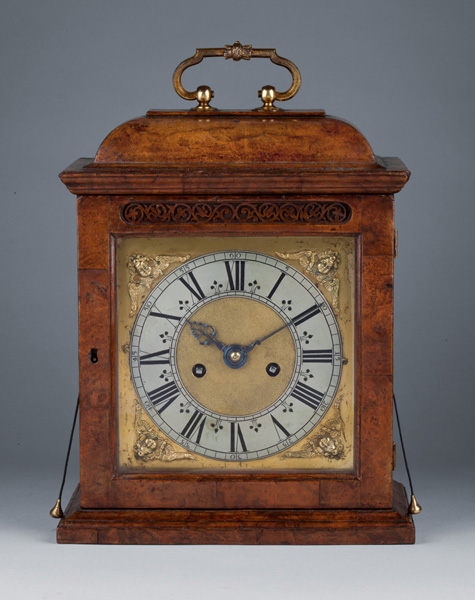
Joseph Knibb, London

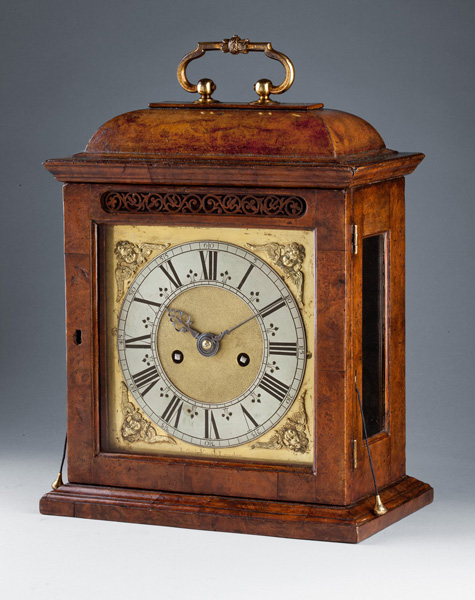
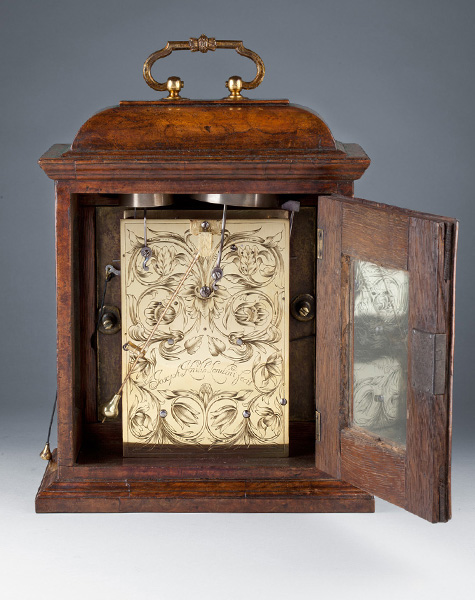
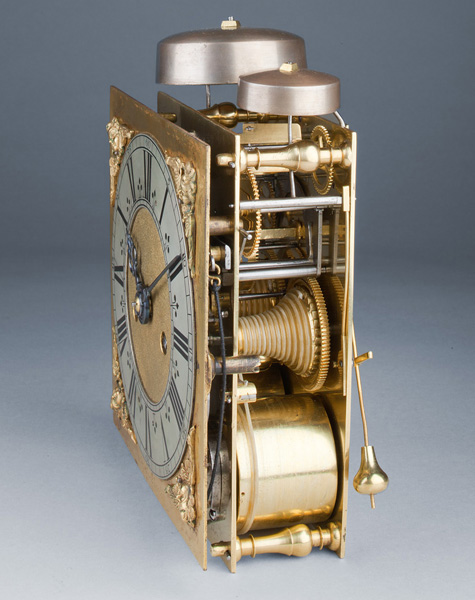
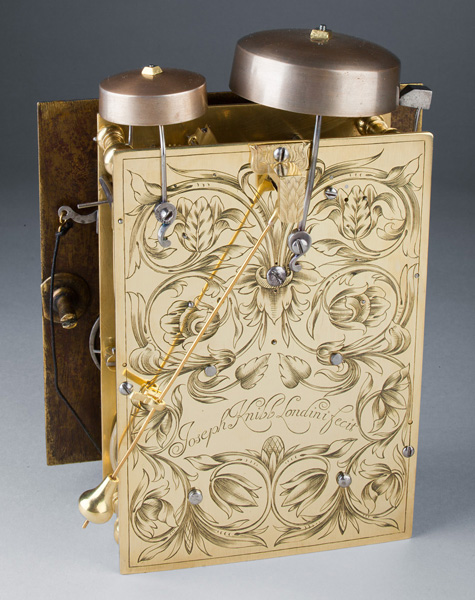
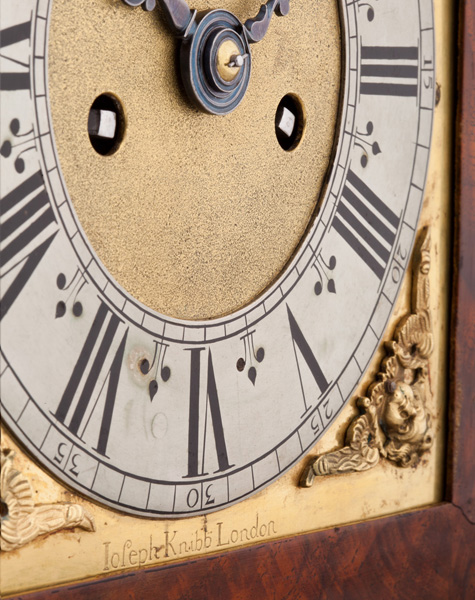
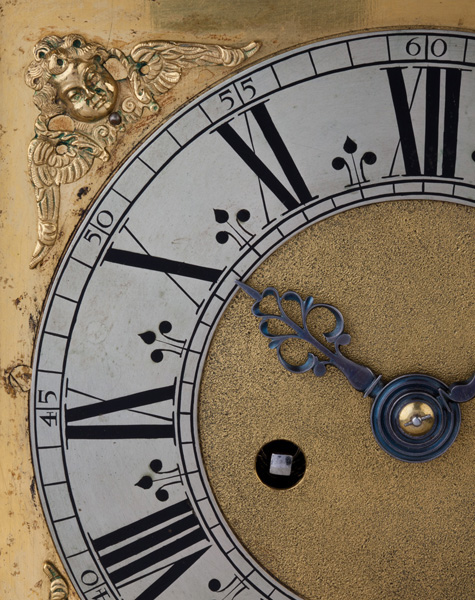
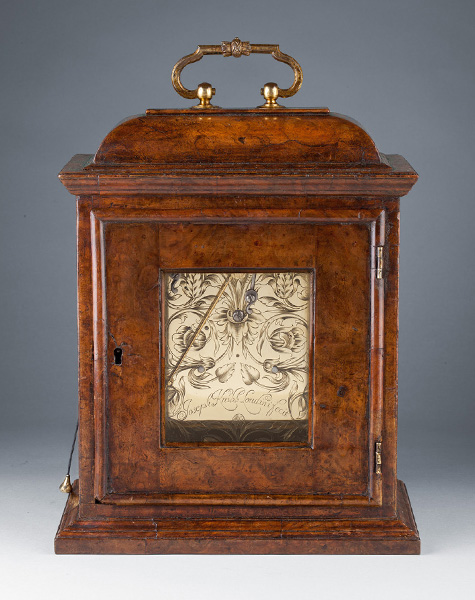
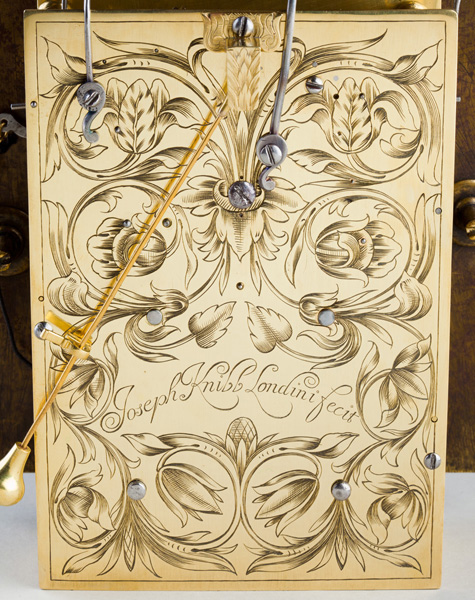
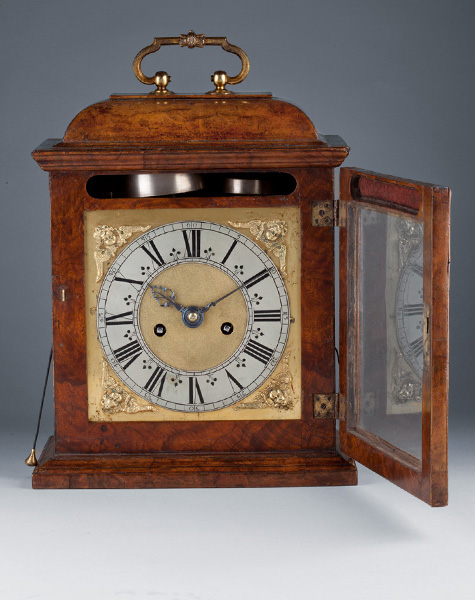
Circa 1690
Sold
12½ inches high
A very fine walnut striking phase III table clock. The Case The walnut-veneered case is surmounted by a fine gilt-brass foliate tied handle above the cushion moulded top. The cushion and flat surfaces have exceptional burr veneers and a superb pale colour, while the main ‘architectural’ mouldings are in cross-grain walnut with smaller long grain mouldings. The top rail of the front door is inset with a pierced walnut sound fret and the side apertures are glazed. The Dial The 6 ½ inch square gilt-brass dial is signed Joseph Knibb London beneath the silvered chapter ring with trident half hour markers, the matted centre is centred by an alarm disc which is set using the tail of the finely pierced and sculpted blued steel hour hand with matching minute hand. The finely chased winged cherub spandrels are correctly of Knibb’s early design with strike/silent lever above and to the left of XII and alarm strike/Not strike to the right. The Movement With latches to the four dial feet and further latches to the seven typical baluster pillars, twin fusees and spring barrels with gut lines, knife-edge verge escapement with bob pendulum. The strike train powers both the hours and the quarters. An internal rack governs the hours struck on the larger bell, while a separate rack and snail governs the ‘ting-tang’ quarters sounding on both the smaller and larger bells, a cam and pump disengages the smaller bell hammer lever from the pinwheel at the hours. The alarm train is wound from the dial and its spring barrel is fixed to the inside of the frontplate engaging a crown wheel with the hammer mounted on the verge and sounding on the small bell. The backplate is symmetrically engraved with tulips and scrolling foliage and signed in the centre Joseph Knibb Londini Fecit. The movement is secured to the case by means of turn-screws at the back of the dial. PROVENANCE From the estate of an exceptional US collection of English clocks and furniture. By family repute the present clock is believed to have been acquired from R.A. Lee in about 1970. In the 60 years between 1948 and 2008 over 180 table clocks by Joseph Knibb have been recorded sold either at auction or privately. Of those clocks 166 had ebony veneered or ebonised cases – but only 14, less than 10%, were veneered with walnut. Of the 14 recorded walnut Knibb table clocks this is the only one to have the combination of quarter strike from the single strike train and the facility of an alarm. In other words, based on our research, this clock is very probably a unique example of Joseph Knibb’s work. JOSEPH KNIBB Joseph Knibb (1640-1711), was the most famous, inventive and prolific member of the celebrated Knibb family. The son of Thomas Knibb of Claydon, he is thought to have served his apprenticeship between 1655-1662 with his cousin Samuel Knibb who was working in Newport Pagnell. Joseph then set up in Oxford in about 1662, later taking on his younger brothers John and Peter as apprentices. In 1669/70 the Knibb family firm were responsible for ‘up-dating’ two turret clocks in Oxford to anchor escapement. He moved to London in about 1670/71 - approximately the same time as Thomas Tompion - and it is now thought that Knibb and Tompion shared their formative horological thoughts and ideas - a fact borne out by the uncanny resemblance of Tompion’s very early clocks to those already being produced by Knibb’s workshops. Like Tompion, Knibb’s mind never seems to have rested, his talent for innovation and invention included an intriguing variety of different striking mechanisms. These included his Roman notation strike (denoted by his use of IV instead of IIII), the double-six and grande sonnerie. Whilst most famous for his Roman striking clocks his two-train quarter striking table clocks were probably the rarest of all. Knibb’s phase III table clock cases have an elegant timeless quality, seen on a centre table or mantel piece their famous outline may be instantly recognised, even from a considerable distance. His deceptively simple case style transcended the vagaries of fashion. Knibb and Tompion produced roughly the same number of table clocks, but once they had established their own house style they were entirely different beasts. Whilst Tompion went for the handsome, robust and masculine style Knibb’s table clocks were aquiline, feminine and delicate. Unlike his ebony table clocks, which were applied with gilt-brass mounts, Knibb allowed his rare walnut table clocks to be appreciated au naturelle. His reason, quite rightly, was that he wanted his clients to be able to fully appreciate his lovely well-chosen walnut veneers without their being ‘spoilt’ by gilt-metal mounts. The present clock is a masterwork of Knibb’s remarkable talent for combining grace, elegance and complexity to create a stunning and quite probably unique table clock.
